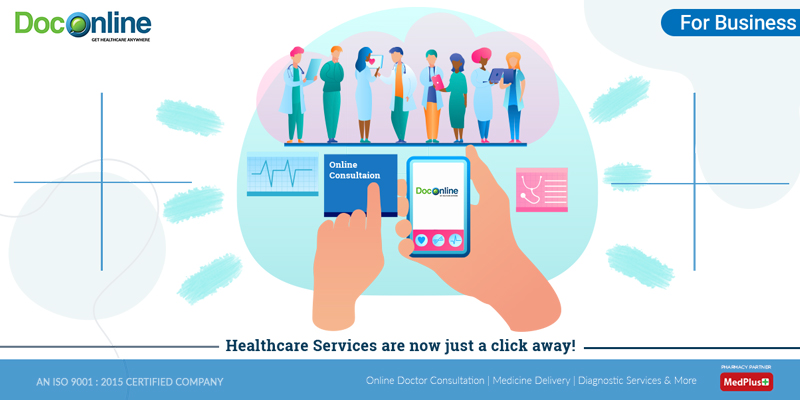The Future of Medication: Discovering Subscription Based Healthcare Versions
The Future of Medication: Discovering Subscription Based Healthcare Versions
Blog Article
Exactly How Subscription-Based Healthcare Is Changing the Medical Market

The Increase of Registration Healthcare
In recent times, the healthcare sector has seen a considerable change in the direction of subscription-based models, showing wider customer fads favoring benefit and predictability. This improvement is driven by the boosting demand for even more available and customized treatment remedies. Registration medical care, often described as attendant medication or direct health care, offers patients a set month-to-month fee for an array of clinical services, considerably changing conventional fee-for-service models.
The rise of registration healthcare is helped with by developments in technology, which make it possible for streamlined interaction between patients and providers - subscription based healthcare. Digital platforms and telehealth solutions have actually become integral, providing individuals the capacity to set up consultations, access clinical records, and receive appointments online. This technical integration not only enhances client involvement but additionally permits suppliers to provide a lot more reliable care
Moreover, the subscription design aligns with the progressing expectations of individuals that look for even more control over their healthcare costs and experiences. By eliminating the unpredictability of co-pays and insurance policy claims, subscription-based medical care uses a transparent and simple approach. While this version is acquiring grip, its expansion encounters obstacles such as regulative difficulties and the requirement for more comprehensive acceptance within the traditional medical care ecological community. Its growing presence notes a crucial minute in the evolution of healthcare shipment.
Benefits for Individuals and Suppliers
Subscription-based medical care provides a multitude of benefits for both people and carriers, improving the characteristics of medical treatment. For individuals, this design offers enhanced access to medical care solutions.
For healthcare providers, subscription-based models foster a more enjoyable and lasting technique. By securing a consistent earnings stream, companies can concentrate on delivering premium treatment without the stress of volume-based service. This model motivates longer person appointments, cultivating stronger patient-provider partnerships and improving health and wellness outcomes. In addition, it offers service providers the flexibility to innovate and incorporate holistic and preventative care techniques. Management tasks are commonly streamlined, minimizing overhanging prices and allowing companies to dedicate more time to client communication. On the whole, subscription-based health care aligns the rewards of patients and companies, promoting a much more patient-centered and effective medical care delivery system.
Trick Attributes of the Version
Often, the essential functions of the subscription-based healthcare design highlight its distinctive strategy to providing medical services. Central to this version is the idea of foreseeable, regular monthly payments, offering clients a comprehensive variety of solutions without the changability of conventional fee-for-service frameworks. This model commonly includes endless access to medical care solutions, precautionary care, and regular check-ups, ensuring that individuals can involve with their doctor proactively instead of reactively.
Furthermore, direct interaction networks, such as telemedicine and messaging platforms, are stressed, enabling patients to receive prompt suggestions and assessments without requiring in-person visits. This improves ease of access and ease, particularly for people with mobility constraints or those living in remote areas. The design likewise promotes stronger doctor-patient partnerships, as doctor are incentivized to focus on long-lasting wellness results instead than temporary sees.
Furthermore, subscription-based medical care commonly incorporates technical developments, such as digital health and wellness records and health tracking apps, to supply tailored and efficient treatment. Clients gain from coordinated and continual care management, which is tailored to their particular health and wellness needs. Eventually, these features collectively develop a patient-centered healthcare experience, focusing on ease of access, expense transparency, and preventive care.

Considerations and obstacles
While the subscription-based healthcare design supplies numerous advantages, it is not without its considerations click for more info and challenges. One considerable obstacle is making sure equitable access. Registration designs might accidentally favor those with higher socioeconomic status, possibly broadening disparities in healthcare gain access to for lower-income individuals that might battle with month-to-month fees. This increases ethical concerns concerning inclusivity and equity in health care shipment.
An additional obstacle hinges on regulatory compliance. Subscription-based healthcare needs to navigate a why not look here complex internet of regulations that vary by region, including problems around individual privacy, data defense, and state licensing requirements. Making certain compliance without impeding the model's flexibility and development can be daunting for carriers.
Additionally, there is the risk of overutilization or underutilization of services. Individuals paying a dealt with cost could overuse services, resulting in boosted functional expenses, while others may underutilize due to fear of burdening the system, potentially overlooking necessary care.
Future Potential Customers and Innovations
The landscape of subscription-based health care is poised for change through emerging developments and developing prospects. As technology remains to advance, the integration of expert system and equipment understanding provides considerable opportunities to enhance analysis precision and improve patient management. try this site Anticipating analytics can change preventive treatment by recognizing prospective health and wellness risks before they manifest, thereby lowering both expenses and the burden on healthcare systems.
Moreover, telemedicine is readied to broaden within subscription versions, offering clients enhanced accessibility to health care professionals no matter of geographical constraints. This not just helps with continuity of treatment but additionally equips people to engage more proactively in their wellness administration. Furthermore, blockchain technology provides possible in safeguarding patient data and ensuring interoperability across systems, fostering depend on and openness.
Partnerships in between tech business and healthcare service providers are most likely to yield innovative solutions, boosting individual experiences and end results. As these leads emerge, subscription-based health care has the potential to redefine exactly how treatment is provided and accessed.
Verdict
Subscription-based medical care is transforming the medical industry by providing a much more obtainable, predictable, and patient-centered method to clinical services. This model enhances patient-provider partnerships, ensures economic transparency, and highlights preventative care via limitless examinations and telemedicine. Regardless of challenges such as regulative obstacles and prospective disparities in gain access to, the registration design holds guarantee for a much more individualized and efficient healthcare experience. As modern technology developments, better developments are likely to deal with existing challenges and maximize health care delivery.
Registration medical care, occasionally referred to as attendant medication or direct main treatment, uses individuals a set monthly charge for an array of clinical solutions, significantly modifying standard fee-for-service versions.
Moreover, the subscription model lines up with the evolving expectations of individuals who look for even more control over their medical care expenses and experiences. For clients, this model supplies boosted accessibility to medical care solutions. In general, subscription-based health care lines up the rewards of suppliers and patients, promoting a more patient-centered and reliable medical care distribution system.
Moreover, telemedicine is set to increase within registration models, offering clients enhanced access to healthcare specialists no matter of geographical restraints. - subscription based healthcare
Report this page